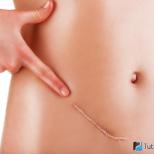Surgical removal of keloid scars. Reduction of keloids at home. The main reasons for the appearance
The causes of keloid scars, their types and stages of formation, methods of combating these skin defects: cryotherapy, laser resurfacing, pressotherapy, injections, ointments and folk remedies, rules for keloid care after removal.
Causes of Keloid Scars
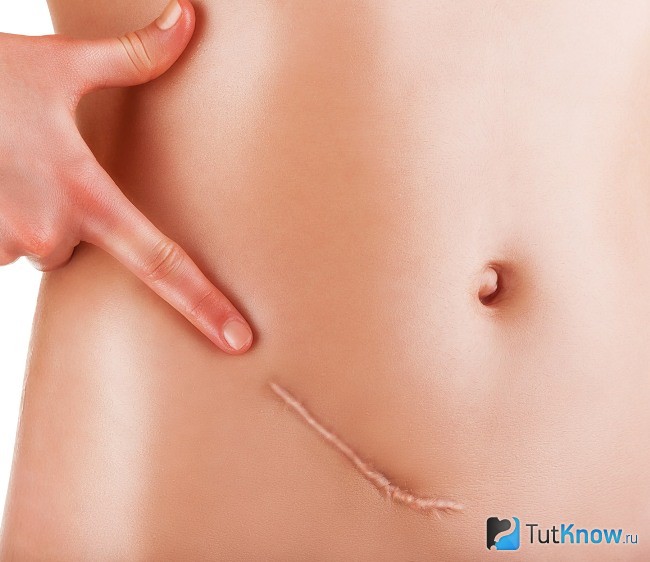
Causes may be
Two patients presented a relapse as a small node at 10 and 12 months after the last penetration. In another study of 31 keloid patients, 3-5 bleomycin infiltrates were given within 1 month. Overall regression was observed in 84% of keloids, and both keloid volume and functional impairment were reduced.
Bodoh and Brun reported complete smoothing in 4% of 36 patients with keloids and hypertrophic scars. Saray, and others. A total flattening of 3%, a pronounced smoothing of 7% and a moderate smoothing of 7% of lesions after injection of jet intraocial injections of bleomycin in 15 patients were obtained.
As a result of severe damage to the skin, a scar is formed. In its formation, collagen takes an active part. Sometimes the process of producing this substance is wrong, resulting in an overabundance. Because of this, the defect on the skin looks coarse and thick. In medicine, the term "keloid scar" is used to characterize this phenomenon.
In addition to a non-aesthetic appearance (bright red or bluish color), this scar can cause pain, permanent itching or burning and may increase with time. Another feature of this type of scars phenomenon is their ability to recur, so they need constant monitoring.
The form of this defect can be very different. However, the boundaries of the scar are always clearly delineated. It protrudes above the surface of the skin. The main places of formation are the belt, chest, neck. Can occur on the face, upper and lower extremities.
Reported significantly better results with interlaser bleomycin compared with the control group with lesions greater than 100 mm 2. Local complications, such as hyperpigmentation, were observed in 75% of patients. Fifty patients with keloids and hypertrophic scars received intralesic bleomycin. Three applications were submitted with an interval of 15 days, and the fourth and final application was submitted 2 months after the third application. Full alignment was observed in 44%, significant smoothing at 22%, adequate smoothing at 14% and no smoothing at 20%.
Modern medicine is not ready to name the exact cause, which leads to the formation of keloid scars. It is established that they can appear as a result of:
- Surgical operations;
- Burns;
- Traumatic injuries;
- Infectious diseases (boils, chicken pox, etc.);
- Acne;
- Disorders of the mechanism of regulation of collagen production in skin cells;
- Keloid disease.
Features of formation of keloid scars
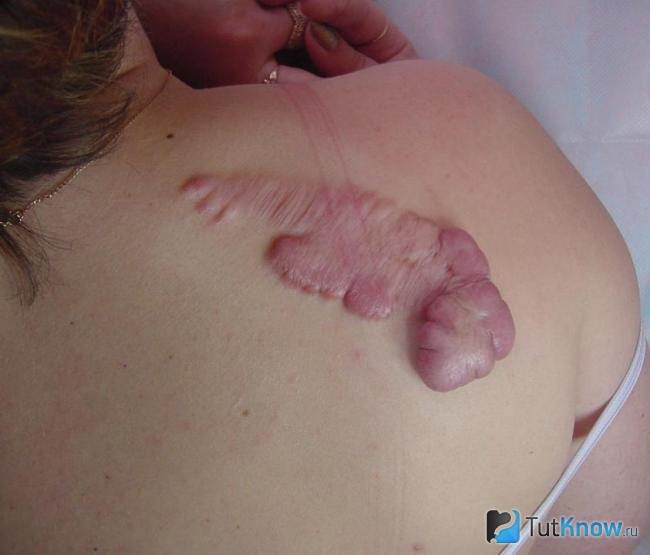
It was found that electroporation in combination with bleomycin is an effective method of treating keloids or hypertrophic scars or for those who do not respond to other methods of treatment. In their study, 20 patients with keloids or hypertrophic scars had an average decrease of 87% in volume and 94% of lesions showed a volume decrease of more than 50%. Scars and scores of erythema also significantly decreased.
Less itching was observed in 89% of patients, and the pain decreased by 94%. The combination of bleomycin and intra-reticular steroids, such as triamcinolone, has repeatedly shown good results. More recently, Camacho-Martinez, etc. Developed a two-part study. The best results were obtained in keloids larger than 1 cm 2 or when divided into square regions of 1 cm 2.
Formation of a keloid scar is due to malfunctions in the mechanism of formation of cells of connective tissue. Most often, such a defect can be found in women. This is due to the fact that the beautiful half more exposes the skin to mechanical influences (tattooing, puncturing various parts of the body, visiting the cosmetic room, plastic surgery, etc.).
The keloid scar passes through several stages in its formation:
- Epithelialization. It begins immediately after traumatizing the skin. On the site, a thin layer of flat epithelium forms. On average, after 8 days, coarsening of the formed film can be observed. Her color becomes pale red. In this condition, the keloid can be up to 3 weeks.
- Swelling. During this period, the formed scar begins to cause inconvenience. He is painful and swollen. After 4 weeks, discomfort disappears, but its color becomes bright red.
- Sealing. During this period, the keloid acquires a density. On the surface, plaques and tubercles are formed.
- Softening. The scar turns pale, ceases to be painful on palpation.
The main types of keloids

Verapamil is a calcium channel blocker that blocks the synthesis and secretion of extracellular matrix molecules and increases fibrinase. Two patients had keloids, which decreased in size from the initial lesion, 2 patients had hypertrophic scars, 4 patients had pruritus, and 1 patient had a keloid at the donor site. In a series of cases, the average satisfaction of patients was reported 4 times on a scale of 1 to.
Lawrence reported 55% of the treated canine tooth maple tissue in 52% of patients after a combination of surgical excision, intralesive verapamil and pressure-earring after an average 28-month follow-up. This result was maintained 1 year after cessation of treatment.
Before deciding which method of treating a keloid scar is appropriate, it is necessary to establish its variety. For convenience, there are two types of this disease:
- Present. Scar formation occurs for no apparent reason. Location - chest, upper third of the shoulder girdle.
- False. Appears in a place where there was damage to the skin.
How to get rid of a keloid scar
At present, there is no ideal way to get rid of keloids. For each person it is necessary to search for an individual method. One approaches folk remedies, another is helped only by medical intervention, and for others, the combination of various procedures is the best option. To date, keloids can be removed in the following ways: laser skin resurfacing, squeezing bandage, the use of steroids, cryotherapy, ointments and gels, surgical intervention, folk remedies.
40 patients were studied and compared the effects of injections of triamcinolone and verapamil. This group concluded that even though the standard first-line treatment for titers is still triamcinolone, verapamil is almost equally effective, has very few side effects, and offers a therapeutic option for the treatment of larger and irregular scars. This includes reducing the size and symptoms of the scar.
In addition, since retinoids affect collagen metabolism, another study involving 9 women and 2 males with keloids treated with 05% tretinoin topically for 12 weeks showed significant reduction in weight and size of keloids when comparing the lesion state at the beginning of the study and in the week.
How to remove keloid scars by cryotherapy
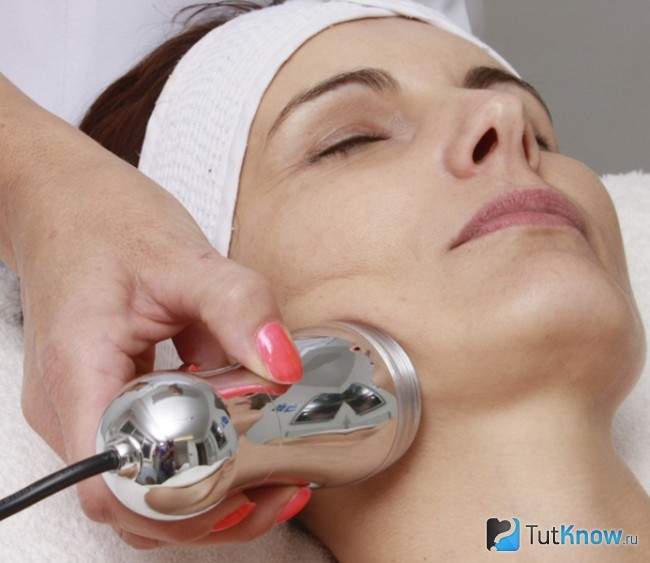
Cryotherapy has recently been very popular not only for rejuvenation, but also for treating a variety of diseases. To remove scars, this method is considered safe and effective. Most often it is recommended for the treatment of young keloids. This type of defects disappears in 50 cases out of 100.
The method of treatment is as follows. Apply liquid nitrogen to the keloid with a tampon or applicator with a temperature of about -196 degrees. Under the influence of the substance, ice crystals are formed in the cages of the rumen. This leads to the death of cytoplasm, organelles, destruction of fibroblasts and the cessation of collagen production.
The most common side effects were photosensitivity, irritating contact dermatitis and skin atrophy. Retinoids can also be used as a preventive treatment. They found that after 24 weeks of treatment, both therapeutic methods are equally effective in preventing hypertrophic scars and keloids compared to the control group. In one study, 13 keloids were excised in combination with nocturnal imiquimod 5% cream for 8 weeks. Ten patients with 11 keloids completed a 6-month study, and the keloids did not resume after 6 months.
The maximum duration of the procedure is 30 seconds. However, as a rule, the impact occurs within 5 seconds. This time is enough to destroy the scar. To completely remove the keloid, several procedures must be performed.
The disadvantages of this method are:
- Strong pain during removal;
- High probability of the appearance of a blister;
- Possible hyperpigmentation of the skin.
Folk Remedies for Keloid Scars
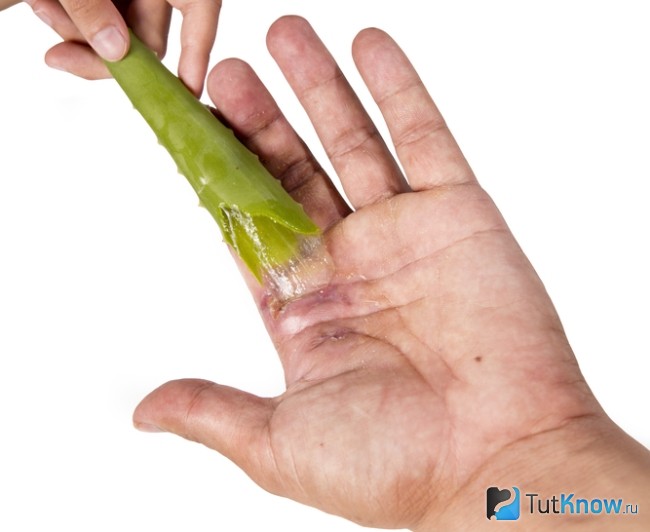
Imiquimod was slightly irritated, and some patients needed a drug release period. Hyperpigmentation was observed in more than half of the patients in the study. In 2 different experimental studies, imiquimod 5% cream was used on xenoids with dried or completely carved mapoids. It was demonstrated that the frequency of relapses on xenoids obtained after initiation of treatment was 0% after 12 months of follow-up and 75% without relapse after 24 weeks of parallel keloid excision.
In another study, 15 patients with hypertrophic scars were treated with either Vaseline or imiquimod 5% cream two months after the operation. After 24 weeks, almost all scars treated with imiquimod were evaluated on standard scales after evaluation. The results showed that imikimod treatment improves the quality of the scar and the color match after the operation.
Do not always use expensive treatments to remove keloids from the skin. Excellent results are provided by folk remedies. Here are some of them:
- Fresh leaf of aloe vera. Take the leaf of a three-year-old plant, gently cut it in half. On the skin cleansed with water, half is applied with a cut downward and fixed with a bandage. Do this 2 times a day. As a result, the scar becomes moistened, painless, inflammation and tissue growth is reduced.
- Fresh lemon juice. The juice of half a lemon is applied to the cleansed skin and left for 30 minutes. Then you need to wash the place with warm water. The procedure should be done 2 times a day. In a month you will see that the scar has become paler, softer and less.
- Apple vinegar. A small amount of apple cider vinegar is applied to the keloid. With gentle massage movements, you must rub the liquid into the scar until it absorbs. Then a break for 5 minutes is done, and the massage of the site is done again. This procedure should be done 2-3 times a day. You will see the result in 4 weeks. If vinegar in a pure form causes irritation, then it should be diluted with water in a ratio of 1: 2.
- Lavender oil. It has pronounced anti-aging properties. It can be used in pure form, but can be combined with tea tree oil and olives in equal parts. The resulting mixture must be applied to a keloid in a small amount and rubbed with soft massage movements.
Laser resurfacing of the keloid scar

After a follow-up period of 6-9 months, 10 of the keloids were repeated, and 13 patients had adverse effects. Interestingly, the keloids localized on the pinna had the lowest frequency of repetition compared to those that were in the chest wall or neck. In an open experimental study, 11 patients used tarolimus 1% ointment twice daily for 12 weeks on their keloids. Although the results were not statistically significant, the study showed a reduction in compaction, tenderness, erythema, and itching for most patients.
Kim, et al. The keloid was resolved in the patient during the thematic tacrolimus in atopic dermatitis. Tamoxifen, a synthetic non-steroidal antiestrogen used to treat breast cancer, has been shown to inhibit the proliferation of keloid fibroblasts and their collagen synthesis in monolayer cultures. Hu et al.
Laser scar resurfacing is by far the most effective method. Conduct it in beauty salons and medical clinics.
The expert carefully removes the upper layer of the scar from the laser. This allows you to make the scar flush with the surface of the skin. This activates the production of new collagen and elastin. The efficiency of keloid removal by this method is up to 70%.
Despite the high efficiency, laser grinding has a number of unpleasant moments:
- Edema formation;
- Appearance of hyperemia and hyperpigmentation;
- High probability of occurrence of acne and cysts;
- Prohibition of being in the open sun.
Gels and ointments from keloid scars

Classification of colloid scars
Botulinum toxin A is a neurotoxin that causes flaccid paralysis of the local musculature and reduces skin tension. This reduction in the stretching force of the skin during wound healing can represent a new therapeutic target for the treatment of keloids.
The main reasons for the appearance
Injections were administered at an interval of 3 months for a maximum of 9 months. Within 1 year of observation, the therapeutic results were excellent, good and fair, with patients failing or showing no signs of relapse. All patients showed an acceptable improvement in the scars at 6 months of follow-up.
Often you can hear about "miracle" ointments and gels, which allow you to remove keloids quickly and effectively. However, unfortunately, this method of treatment must be combined with other methods (laser resurfacing, cryotherapy, drug treatment).
The use of ointments can significantly reduce the scar, make it softer and painless. But completely remove the keloid, applying only the ointment, you will not succeed.
Begin to use ointments and plasters from the scar, you can only after he healed after the injury, when the crusts completely fall off. Before that, it is allowed to lubricate the scar with Panthenol, Dexpanthenol and other similar preparations. In no case can "help" crusts fall off quickly, tear them away.
Eight patients had concomitant alternating intradermal injections of triamcinolone. Complete flattening of the keloids was obtained after the interval of repeated injections 2-43 months. Two of the 12 patients had relapses along with previously treated sites. One patient developed atrophy, leading to ulceration and further relapse.
Causes of Keloid Scarring
A new antifibrotic product, avotermine, was studied. In these studies, wounds treated with avotermin showed a statistically significant improvement in the appearance of the scar with a response rate of more than 70%. Evaluation of the investigator with a 7-month internship using a visual analog scale also received statistical significance. It is estimated that approximately 75% of 7-month scars evaluated for wounds treated with avotermin have a structure more similar to normal skin compared to placebo in histopathological analysis.
Injections of corticosteroids against scars

Corticosteroids are drugs that reduce excessive scarring due to such effects:
- Reduction of the proliferation and activity of fibroblasts;
- Decreased collagen synthesis;
- Reduced synthesis of glucosaminoglycans;
- Reduction of the synthesis of inflammatory mediators.
Pressotherapy from keloids

Removal of keloid scars and scars with drugs
Cancer wounds on the inside of each arm were randomized to receive the following: no injection, 1 intradermal injection of avotermin or placebo, or 2 injections of avotermin or placebo. A dose of 50 ng, administered twice, achieved significant improvements in the appearance of the scar compared with placebo.
A double-blind, randomized trial evaluated the efficacy and safety of 4 doses of avotermin given once. 156 patients undergoing bilateral surgical removal of varicose veins of the veins were studied by ligating the saphenofemoral deposits and removing the long saphenous vein. Four different doses of avotermine were administered. The primary efficacy variable was filled with a panel of the overall screening score estimated over 6 weeks and 7 months.
Pressure exerts a depressant effect on the skin. Clinically, it was proved that when using pressure bandages on the keloid scar the amount of collagen fibers decreased.
Pressotherapy is a combination of various compression methods of treatment. It includes pinpoint or button compression, the use of pressure bandages, elastic bandages, silicone-based patches.
Currently, the most effective are silicone plasters (Spenko, Mepeform). If you use them immediately after scar formation, you can improve the condition in more than half the patients. It is important to wear this patch around the clock for several months. And this is difficult enough to sustain.
It is regulated at the beginning of the embryonic period and is considered an important cytokine in the fetal treatment of fetus. The overall scale of the Vancouver scale was significantly lower in comparison with the control group, although erythema, pigmentation, elasticity and hydration did not differ significantly.
The hydrogel framework is approved for use in Europe to improve wound healing and scarring and is available in the form of injectable hydrogel stalks gelatin-dextran. His approval consists in injecting injection sites immediately before closure. It is believed that it functions as a lattice for the adherence of fibroblasts, which leads to a more orderly and organized distribution with improved healing of wound healing.
Keloid scars care after removal

Whichever of the scar removal procedures you choose, it is necessary to remember that after this you need to take maximum care and protect your skin from the sun and external factors.
Often keloid scars tend to recur. Therefore, it is necessary to monitor and observe the place where the scar was. At the first sign of a relapse, you should immediately consult a doctor. Thus, you will prevent the development of soreness and hyperemia of the keloid.
Hydrogel forests have also been studied in the treatment of keloids. Berman et al. 19 subjects with 26 ear keloids were studied. They were treated with excision and subsequent injection of 3 ml scaffold on 5 cm of the wound margin, along with the approximation and closure of the wound margin. With a 12-month follow-up, the recurrence rate was 2%, and each of the recurrences was measured less than 15% of the original volume, with 60% of relapses measuring less than 5%. In addition, the average patient's scar satisfaction at a scale of 1-10 was.
Surgical treatment includes cryotherapy, excision, laser therapy and other light therapies. Cryotherapy can cause pain and permanent depigmentation in individual patients. Smoothing was achieved in 75% of patients. For treatment of 10 clones of pulmonary blood in 10 white patients, a single therapy was performed with the help of intracellular cryozone, which allowed to obtain a statistically significant decrease in the volume of the rumen by 4% after 18 months of observation in comparison with the initial measurements. There were reported zero relapses.
For preventive purposes, treat the site with special creams and gels. Do not forget about cosmetics, which are great for permanent moisturizing of the skin.
Remember that staying in the open sun, especially during rush hour, can provoke a relapse of the keloid. Therefore, air baths under direct sunlight are contraindicated for you. A beautiful even tan can be obtained in the shade. In summer, try to keep the scar's place closed.
Do not get involved in solariums and saunas. Increased temperature and radiation can also provoke collagen production and relapse.
How to get rid of keloid scars - look at the video:
The fight against keloid scar is a long and complex process. Not always treatment allows you to completely get rid of the scar. However, the implementation of certain recommendations, the use of special creams, bandages can reduce the size of the defect, make it paler and prevent growth.
Perhaps the scars adorn the men. And women and children? Regardless of the attitude to the aesthetic problem of scars, for the first time faced with keloid scars, most people experience fear. Let's try to understand why they arise and how to get rid of them without harm to health and attractiveness.
Video: laser DOT-therapy of scars and scars
A little about the theory of scar tissue formation
Healing of wounds after traumatic damage to the skin - a complex biological process. As a rule, it lasts throughout the year and ends with the appearance of a formed scar.
It should be noted that physiological scarring includes three main stages:
- fibroblastic;
- fibrous;
- hyaline.
The duration of the fibroblastic stage is 30 days on average. At this time, young fibroblasts appear abundantly in the damaged skin, the number of vascular formations increases.
On day 33 after the injury, the fibrous stage begins. A characteristic feature of this period is the emergence of mature fibroblasts and the accumulation of fibrous collagen structures in the scars.
By day 42, the hyaline stage is formed, during which the number of cells and vessels decreases in damaged tissues.
The end product of the process of repairing lesions on the skin is a scar. It is a connective tissue that replaces defects in the skin.
Note!
Even a timely call to a specialist will not relieve your skin from scars, but will allow you to promptly take action in the event of complications.
Scars occur:
- normotrophic (at the level with healthy skin),
- atrophic (below the surrounding skin),
- hypertrophic (above the surrounding skin)
- keloid (bumpy dense formations that abruptly rise above surrounding tissues).
Main features of keloid disease
Keloid scar is a specific type of scar, the characteristic feature of which is its introduction into surrounding normal tissues. Most often it occurs after injuries, burns and surgical operations. Instead of a pale normal scar, a rough pathological scar tissue appears - a cyanotic keloid, which is often called a colloid scar in people.
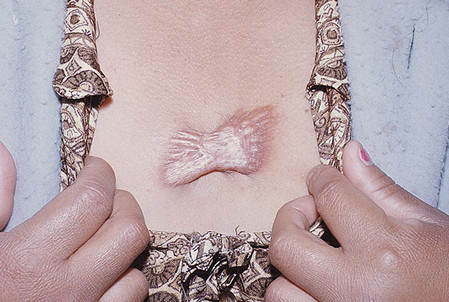
By the way, the size of the damage for the so-called keloid disease does not matter. Keloid can be formed both after insect bites and as a result of piercing common in youth. It is worth noting that in rare cases, keloid scars occur for no apparent reason.
Keloid disease is equally common among men and women. The main age category suffering from keloid scars is from 10 to 30 years. Patients under the age of 10 and after 60 years are very rare.
Keloid scars can be of various shapes: star, fan, in the form of linear strands.
Live and on the photo keloid or colloid scars look unaesthetic, sometimes even horrible.
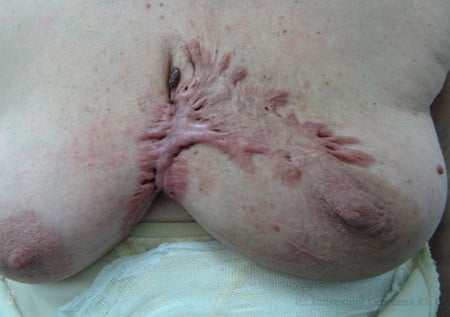
Keloid scar on the chest of a woman
They have clear boundaries that protrude above the level of the skin. Unlike usual scars, the keloid scar tissue gradually increases in size. These cutaneous neoplasms do not disappear with time.
Characteristic places of localization of true keloids:
- decollete area;
- shoulders;
- the back of the neck.
False keloids can develop anywhere after traumatic damage to the skin.
Quite often there are colloid scars on the ears (due to their piercing) and on the body after removal of the birthmark.
When a keloid neoplasm is found on the skin, it is forbidden to squeeze out and cauterize, especially with solutions based on the herb. It is also recommended to refuse massage and use of cosmetics. To prevent uncontrolled growth of scar tissue, you should forget about visiting the sauna, solarium, beach and taking hot baths.

Causes and stages of the process of formation of keloid scars
Despite the high level of development of modern medicine, the causes of keloids on the skin are not exactly known. The mechanism of their formation is associated with a disruption of the development of connective tissue in the process of wound healing. It is established that the synthesis of collagen in the keloid scar is twenty times faster than in normal skin.
The main provoking factors of a keloid disease are:
- genetic predisposition;
- inflammatory processes during healing;
- problems of the immune and hormonal nature;
- disturbances of innervation;
- age changes in the body.
The process of occurrence of tumorous formations on the skin occurs in 4 stages
Epithelialization
A thin film of flat epithelium forms on the injured area of the skin. After a week, it starts to thicken and slightly coarsens, the color of the scar turns pale. The maximum duration of the stage is 3.5 weeks.
Swelling
The scar grows in size, pain appears on palpation. The increase in redness of the skin, which begins in 3-4 weeks, is accompanied by a gradual decrease in painful sensations.
Sealing
The scar is covered with dense plaques, which gradually become bumpy.
Softening
Neoplasm becomes soft and motile.
Note!
Keloid scar tissue itself is not dangerous to human life and health, but its appearance causes significant psychological discomfort.
Traditional methods of treatment of keloid scars
The effectiveness of treatment of keloid cicatricial neoplasms depends on their age. According to this criterion, keloids are divided into two types: young and old.

If keloids are present on the patient's skin for less than 5 years, they are considered young. Such skin lesions are bright, their surface is smooth and shiny. They continue to grow actively.
Scars age 5 to 10 years old. They are paler than young in color, their surface is uneven and wrinkled.
It is important!
When suspicious tumorous formations appear on the skin, a doctor should be consulted. Treatment of keloid and hypertrophic scars should be started as early as possible.
At the moment, there is no universal method for organizing a medical process that would allow to solve this complex problem in the shortest possible time. Every case of keloid disease requires an individual approach.
The therapeutic arsenal of anti-Keloid therapy includes various methods.
- Laser resurfacing
It minimizes the damage to the skin that surrounds the scar tissue. Unfortunately, the laser is not capable of completely eliminating keloids, but several sessions of such therapy can make them almost invisible.
Video about laser resurfacing of a keloid scar
- Pressure
Using a special tight bandage prevents the proliferation of keloid tissues. The result is achieved only if it is worn around the clock for a year.
- Use of steroids
The course of injection procedures allows to level the surface of keloids, reduces their size. In rare cases, a few months after steroid injections, the growth of neoplasms on the skin resumes.
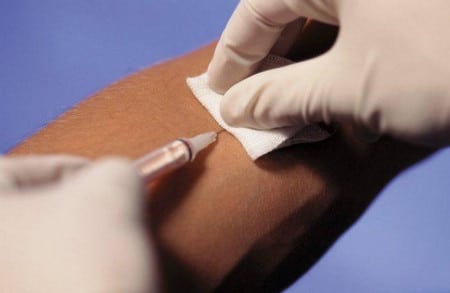
- Cryotherapy
This method is effective for the treatment of young keloids and hypertrophic changes in skin tissues.
Note!
In the field of exposure, then later, darkening of the skin is often observed.
- Use of silicone adhesives and gels
- Radical Surgery
It should be noted that excision of the keloid scar in most cases leads to its recurrence. At the same time, a new keloid can be 3-4 times the size of the original keloid.
Therefore, if your doctor recommends the removal of colloid scars surgically, consult other specialists before agreeing.
- Creams
Used in conjunction with other methods. Rubbing only "Kontraktubeksa" is absolutely useless. The fight against keloids, which are located in the open areas of the skin, also assumes the constant use of sunscreens with a level of protection of at least SPF 30.
When asked how to remove colloid scars, only an experienced specialist can answer. Even if the healing process drags on for many months, do not give up. After all, the result of treatment depends on your mood.
Treatment of colloid scars with folk remedies
There is an opinion that the treatment of colloid scars with the help of prescriptions based on natural components is as gentle as possible. The use of oils and herbs allows restoring the integrity of the skin, reduces pain.
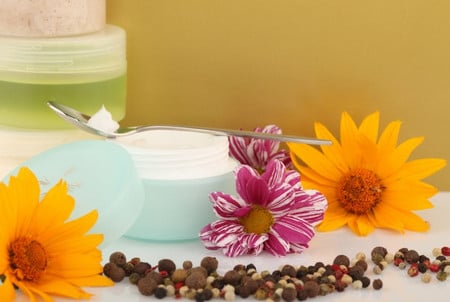
The best means in the fight against scars are medicinal plants:
- mokritsa, St. John's wort, mint
- chamomile, nettle, yarrow,
- japanese saffron, geranium and fennel.
Medical compresses
- With a moister
To soften the scar tissues, you can prepare a simple compress with the butter of the woodlice.
You will need a glass jar, leaves of the lice, olive or sunflower oil.
Green leaves of the wood must be carefully tamped into a glass container, filled with oil and put in a cool place. After two weeks, the resulting oil extract is filtered and drained into a dark vial. It can be stored in the refrigerator for 6 months. The product is applied to cotton cloth and applied to the rumen for 20 minutes.
- With St. John's wort
Helps to remove oil from St. John's wort. To make it, you can use the previous recipe. This oil extract is recommended to be applied to keloids twice a day or as needed.
- With oils
Often keloids are treated with sea buckthorn and olive oil. Improve the microcirculation of the skin can be castor oil, a mixture of sunflower oil with beeswax.



